Contents
i Wartime Sexual Violence
Against Men
ii Men and Masculinities in a Transnational World
Series Editors:
Simona Sharoni (SUNY Plattsburgh) and Henri Myrttinen (International Alert)
In the past two decades, the field of men and masculinities studies has been steadily growing in both breadth and depth. As a result, working with men and masculinities has gained increased interest not only among scholars in the academy but also among policy-makers and practitioners. This is reflected in a steady increase in research on masculinities but also in the growth of the global MenEngage movement. In the political arena, the recent UN Security Council Resolution 2242 on gender, peace and security also specifically mentioned working with men and boys. At the same time, however, critical men and masculinities studies remain under-represented in research and policy debates as well as in academic publications and curricula. The book series aims to advance interdisciplinary/multidisciplinary/transdisciplinary scholarship on men and masculinities
Titles in the Series
Wartime Sexual Violence Against Men: Masculinities and Power in Conflict Zones
lise Fron
iii Wartime Sexual Violence
Against Men
Masculinities and Power
in Conflict Zones
lise Fron

iv Parts of this book build upon previously published work. I am grateful to the European Review of International Studies (Budrich) and to Springer for permission to reproduce parts of the following publications:
Fron, lise. Wartime Sexual Violence Against Men: Why So Oblivious? European Review of International Studies 4, no. 1 (2017): 6074.
Fron, lise. Suffering in Silence? The Silencing of Sexual Violence Against Men in War Torn Countries. In World Suffering and Quality of Life , edited by Ron Anderson, 3144. New York: Springer, 2015.
Fron, lise. Support Programs for Male Survivors of Conflict-Related Sexual Violence. In Alleviating World Suffering, The Challenge of Negative Quality of Life , edited by Ron Anderson, 33947. New York: Springer, 2017.
Published by Rowman & Littlefield International Ltd
6 Tinworth Street, London SE11 5AL, United Kingdom
www.rowmaninternational.com
Rowman & Littlefield International Ltd.is an affiliate of Rowman & Littlefield
4501 Forbes Boulevard, Suite 200, Lanham, Maryland 20706, USA
With additional offices in Boulder, New York, Toronto (Canada), and Plymouth (UK)
www.rowman.com
Copyright 2018, lise Fron
All rights reserved . No part of this book may be reproduced in any form or by any electronic or mechanical means, including information storage and retrieval systems, without written permission from the publisher, except by a reviewer who may quote passages in a review.
British Library Cataloguing in Publication Data
A catalogue record for this book is available from the British Library
ISBN: HB 978-1-7866-0929-8
PB: 978-1-7866-0930-4
Library of Congress Cataloging-in-Publication Data
ISBN 978-1-78660-929-8 (cloth : alk. paper)
ISBN 978-1-78660-930-4 (paperback : alk. paper)
ISBN 978-1-78660-931-1 (electronic)
 The paper used in this publication meets the minimum requirements of American National Standard for Information SciencesPermanence of Paper for Printed Library Materials, ANSI/NISO Z39.48-1992.
The paper used in this publication meets the minimum requirements of American National Standard for Information SciencesPermanence of Paper for Printed Library Materials, ANSI/NISO Z39.48-1992.
Printed in the United States of America
v Contents
vii Acknowledgements
I am forever indebted to those in Eastern DRC, Burundi, Rwanda, and Northern Ireland who agreed to share their stories with me, however painful and daunting. I am also grateful to all my colleagues and MA students in the Great Lakes region of Africa who encouraged me to write this book and who helped me to identify and meet relevant interlocutors for this research. All mistakes or misinterpretations remain my own, and I apologize if I have misrepresented or misinterpreted anything that I witnessed or was told.
A heartfelt thank you goes to Dr. Emanuela Mangiarotti for having read and commented on an earlier version of the manuscript and for the numerous stimulating discussions we have had, many of which are reflected in this book.
My sincere thanks also go to my colleagues at the Tampere Peace Research Institute in Finland, who have been highly supportive of this research.
Writing this book would have been impossible without my friends encouragement, and in particular without Marie-Cciles constant support.
May the road rise to meet you.
Introduction
Scholarship has long established the multiple intersections between gender and conflicts, and recognizes gender as a fundamental dimension of politico-cultural mobilization in nationalist politics, conflict and war (Byrne 1996; Cockburn 2004b; Giles and Hyndman 2004; Mayer 2000; Nagel 1998). Literature has, for instance, explored how gender and ethnicity are used in narratives and political discourses, how gender roles, militarism and war are tightly interrelated, how conflict is likely to have a different impact on women and on men, and how the meanings of conflict and security might diverge for women and men. One particularly interesting and fruitful line of inquiry explores how masculinities and femininities are constructed in times of conflict and war, and how conflict actors aspire to build a masculine Self by disempowering/feminizing a threatening Other such that a new, strong masculinity is affirmed (Weeks 1985, 190). So, as the gender hierarchy becomes a signifier of a domination/subordination paradigm, male and female spheres of action and their mutual relations inform conflicts between political, social or cultural communities. Such analysis is particularly relevant for understanding how conflict-related sexual violence participates in enforcing relations of power, weaving together gender with other institutionalized dimensions of social power, for instance, nationalism, religious identity, caste, ethnicity, sexuality and politics.
Yet, despite a widespread recognition of the relational and intersectional character of gender, much of the existing literature has shown a tendency to treat gender as a womens issue, especially when it comes to wartime sexual violence. It is, however, increasingly difficult to ignore the fact that wartime sexual violence targets men too, a fact that a few researchers and NGOs have been describing and analyzing since the mid-1990s, if not in a systematic fashion. As explained by Don Sabo, Whereas researchers and public health advocates began to recognize the sexual victimization of women in Western countries during the late 1960s, it was not until the latter 1990s that the sexual abuse of men began to receive systematic scrutiny from human service professionals and gender researchers (2005, 338). In the wake of research on sexual torture of male prisoners during civil wars in Chile, El Salvador or Greece, reports initially focused on the suffering of women have begun to unveil how widespread sexual violence against boys and men in military settings and conflict zones is, for instance, in regions like Eastern Democratic Republic of Congo (DRC) (Johnson et al. 2010), and that it has been a constant feature of most conflicts and wars, though most of the time silenced by political and military authorities, if not by victims themselves (Nizich 1994; Schwartz 1994; Carlson 1997; Oosterhoff et al. 2004; Carpenter 2006; Sivakumaran 2007). These publications have begun to shed light on the extent, features and consequences of this phenomenon, exploring the destructive power of such violence on individuals, but also on communities as a whole. It has, for instance, been shown that wartime sexual violence against men and boys is, like that committed against girls and women, mostly perpetrated by men in arms, belonging either to armed groups or to conventional armies. The combination of rape and sexual mutilation has also been described as the most prevalent form of sexual violence against men, especially in detention, alongside other forms of torture (Carpenter 2006, 94). Further, the public character of this violence, often inflicted in front of an audience, has been pointed at, even if that publicity never guarantees any kind of open debate afterwards, such as shown by Oosterhoff et al. in the case of Croatia (2004, 68).

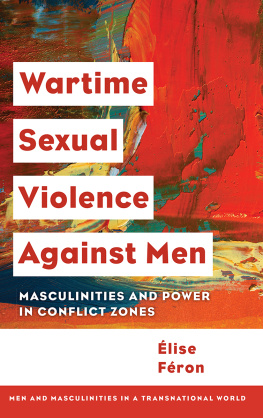
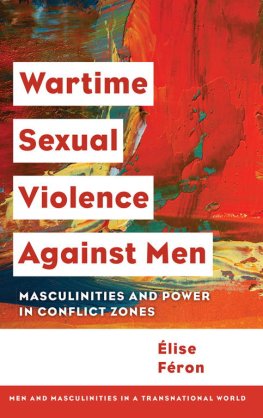



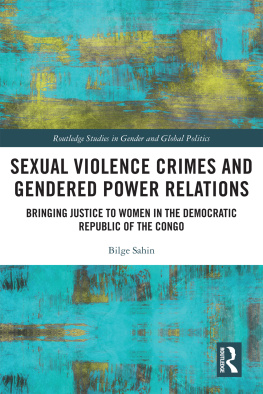
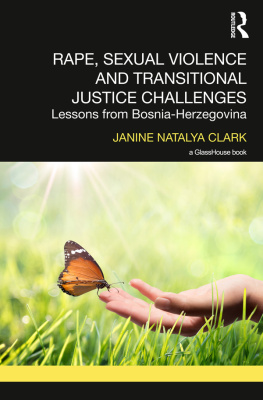

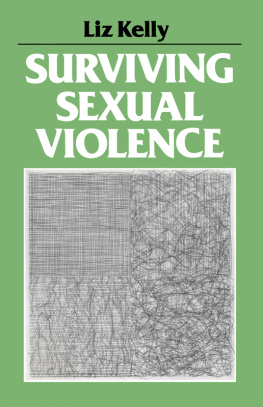
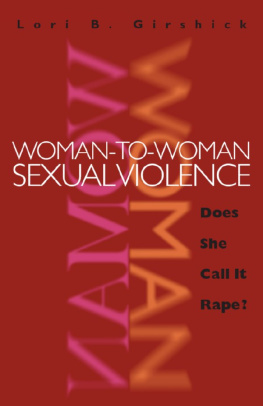


 The paper used in this publication meets the minimum requirements of American National Standard for Information SciencesPermanence of Paper for Printed Library Materials, ANSI/NISO Z39.48-1992.
The paper used in this publication meets the minimum requirements of American National Standard for Information SciencesPermanence of Paper for Printed Library Materials, ANSI/NISO Z39.48-1992.